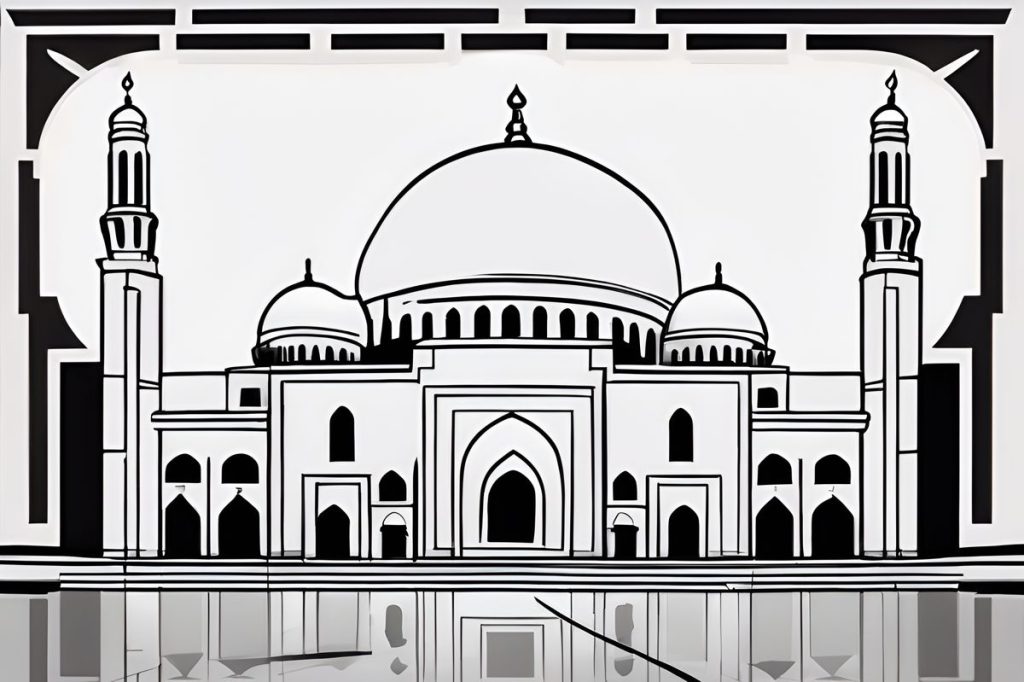The restoration of the Hamidiye mosque in Lefkara, Cyprus, symbolizes peace and unity between Greek and Turkish Cypriots, supported by the UN and the EU. This project highlights the importance of preserving cultural heritage as a means to foster understanding and cooperation, paving the way for a harmonious future on the island.
What is the significance of the Hamidiye mosque restoration in Lefkara, Cyprus?
The restoration of the Hamidiye mosque in Lefkara serves as a symbol of peace and trust between Greek and Turkish Cypriots. It represents the shared cultural heritage that unifies Cyprus, promoting understanding and cooperation. This UN-backed project, funded by the EU and supported by the UNDP, underlines the importance of preserving cultural monuments to foster a harmonious future.
A Symbol of Peace and Trust
The United Nations has celebrated the completion of the Hamidiye mosque restoration in Lefkara, Cyprus. Philippe Baudin, the UN’s senior political affairs officer on the island, regards the event as a beacon of hope. He emphasized its potential in strengthening Lefkara’s status as a key tourist destination. Furthermore, Baudin expressed that the restoration work radiates a powerful, positive message that could resonate well beyond Cyprus’ shores.
The restoration process, spearheaded by the Bicommunal technical committee for cultural heritage (TCCH), is seen as a vital step in fostering a climate of trust and peace across the island. This committee has been pivotal in nurturing a cooperative spirit between the Greek Cypriots and Turkish Cypriots, reflecting the UN’s broader commitment to cultural preservation as a cornerstone of sustainable development and enduring peace.
Cultural Heritage as a Pillar of Harmony
Jakhongir Khaydarov, head of the United Nations Development Project in Cyprus, has also acknowledged the significance of the mosque’s conservation. He reaffirmed the UN’s dedication to safeguarding cultural heritage, which is not only crucial for the current generation but also as an assurance of stability for those to come. The TCCH’s efforts are a testament to the shared belief in the power of cultural heritage as a unifying force.
Ali Tuncay, the Turkish Cypriot co-chair of the TCCH, highlighted how this joint endeavor transcends mere architectural revival. It’s a meaningful gesture towards healing, understanding, and mutual respect between the communities on the island. The work of the TCCH stands as a symbol of the shared culture and history that unites Cypriots, a legacy that belongs to every citizen.
Restoring the Past for the Future
Sotos Ktoris, the Greek Cypriot co-chairman of the TCCH, echoed Tuncay’s sentiments. He pointed out that the preservation of monuments like the Hamidiye mosque is critical, not as emblems of division, but as invaluable and undeniable evidence of a shared cultural legacy. The endeavor to protect and celebrate Cyprus’ monuments serves to cultivate trust, respect, and understanding between the two communities.
The mosque, a notable landmark in Lefkara, bears historical significance. Although the current edifice dates back to the early 20th century, it stands on the same grounds where the original mosque, built between 1835 and 1883, once stood before its demolition in 1987. The restoration of this site was made possible through funds provided by the European Union and the technical expertise of the United Nations Development Programme, reflecting a collaborative effort to preserve history for future generations.
A Blend of History and Unity
The story of the Hamidiye mosque goes beyond a simple tale of bricks and mortar. It marks a chapter in the collective history of Cyprus, where shared cultural heritage becomes a foundation for building a more cohesive future. As these restoration efforts continue, they not only rehabilitate historical structures but also rebuild bridges between communities, fostering a sense of shared identity and purpose.
The mosque’s restoration serves as a reminder that cultural heritage can serve as a bridge to peace. It stands as a monument not only to the past but also to the potential of unity and cooperation in carving out a stable and harmonious future for all Cypriots. With such initiatives, the hope is that cultural landmarks like the Hamidiye mosque will continue to inspire and promote goodwill for many years to come.
What is the significance of the Hamidiye mosque restoration in Lefkara, Cyprus?
The restoration of the Hamidiye mosque in Lefkara serves as a symbol of peace and trust between Greek and Turkish Cypriots. It represents the shared cultural heritage that unifies Cyprus, promoting understanding and cooperation. This UN-backed project, funded by the EU and supported by the UNDP, underlines the importance of preserving cultural monuments to foster a harmonious future.
Who supported and funded the restoration of the Hamidiye mosque in Lefkara?
The restoration of the Hamidiye mosque in Lefkara was supported by the United Nations and the European Union. The project received technical expertise from the United Nations Development Programme (UNDP) and was spearheaded by the Bicommunal technical committee for cultural heritage (TCCH).
What role does cultural heritage play in fostering peace and unity in Cyprus?
Cultural heritage plays a crucial role in fostering peace and unity in Cyprus by serving as a bridge between communities. The preservation of historical monuments like the Hamidiye mosque highlights the shared cultural legacy of Greek and Turkish Cypriots, promoting trust, respect, and understanding.
How does the restoration of the Hamidiye mosque contribute to the future of Cyprus?
The restoration of the Hamidiye mosque in Lefkara contributes to the future of Cyprus by promoting harmony, cooperation, and a sense of shared identity among its communities. This project not only preserves historical structures but also rebuilds bridges between Greek and Turkish Cypriots, paving the way for a stable and peaceful future on the island.

